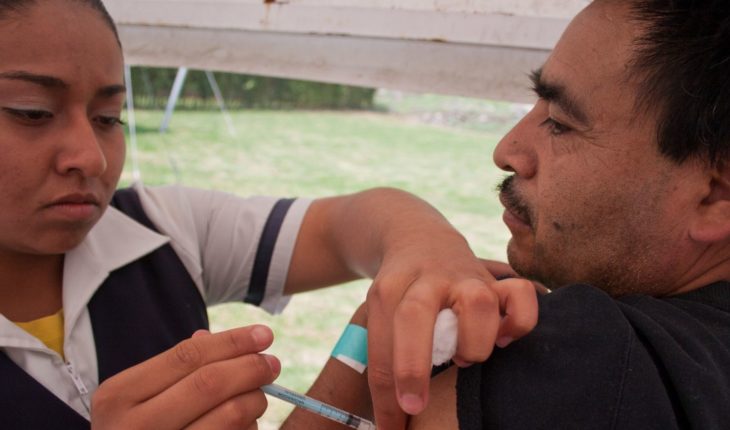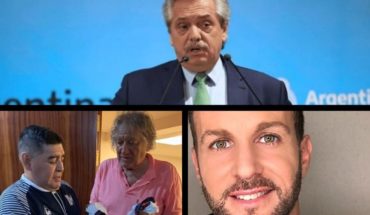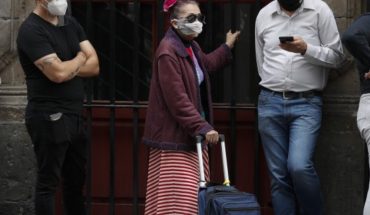The last measles epidemic in Mexico occurred in 1989-1990 with 89 thousand 163 cases and although the incidence has been dropped with the implementation of the Universal Vaccination Program since 1990, the country has not yet met the target of 95% of vaccination coverage, which involves the emergence of outbreaks, specialists agree.
In 2018 there were 20 cases of measles and in 2017 and 2016 there were no cases. The highest peak had occurred in 2004 with 64 infected. However, in 2020, 69 were registered in the Valley of Mexico by this 25 March.
Read: Measles cases increase in CDMX
Experts agree that the reason for this increase is necessarily related to vaccination, as it is a preventable disease precisely because there is a vaccine.
Who should be vaccinated?
Measles is a virus that causes fever, conjunctivitis, cough and small spots with white or bluish white center in the mucosa of the mouth lobby, and is highly contagious.
Each person with measles can spread up to 18 people, while COVID-19, for example, the contagion is 3 people, explains the epidemiologist Jorge Baruch, of the UNAM Traveler’s Clinic.
The difference is that measles particles can circulate in the air, even at a distance of 6 meters, while COVID-19 is infected by direct contact, hence the recommendation to the estrangement of people and constant hand washing for the latter.
Added to this is that the ronchitas appear four days after infection, so in that period the spread may increase as patients do daily activities before developing symptoms.
For this reason, says Dr. Carmen Espinosa, an infectious pediatrician, the way to avoid contagion is vaccination, in children, as marked by the vaccination scheme for one-year-olds and reinforcement at age six, but also for adults who have not received full vaccination and who have never had measles sick.
Read: Cofepris holds two shipments of measles vaccines, Lopez-Gatell confirms
“We have to check the vaccination card. That’s the most important thing. If I have two doses, as long as the first dose occurred after the first year of life, I am protected,” she explains.
The problem is for those born before 1990, when vaccines were applied to children under one year of age, and then it was discovered that this was ineffective as the immune system is not yet mature. Therefore, starting in 1992, the vaccination schedule included the measles vaccine after 12 months.
“All people who had less than two doses in their vaccination schedule would have to get a dose right now,” as recommended by the Health Organization (WHO), explains Dr. Espinosa.
But for adults they would have to look for the vaccine in the private sector, because the public health system only provides for free vaccines for children aged 1 and 6 in hospitals and health centers.
However, not all adults could get vaccinated. Dr. Baruch says that vaccination is not recommended for over 50s because there is the possibility of “adverse effects” due to the aging of the immune system.
Preventing measles infection is indispensable because 1 in 10 children may develop ear infection, if aggravated by pneumonia, and in 1 in 1,000 they develop encephalitis (brain inflammation) and one or two in 1,000 die. In addition, it can cause miscarriage or premature births.
While vaccine application has been on the rise in the country, the basic childhood vaccination coverage was 86.9%, according to information from the Ministry of Health.
Epidemiologist Jorge Baruch says that “the measles outbreak is due to the low percentage of complete vaccination schemes. To reduce the risk of an outbreak, governments must ensure a vaccination scheme above 95%, otherwise this happens.”
Although this is a recommendation of the World Health Organization and was the goal at the beginning of President Enrique Peña Nieto’s six-year-old, it has not been achieved, even because of the existence of the 1990 Universal Vaccination Programme.
In addition, in 2018 there was a failure of measles vaccines, so more than 770,000 children did not receive their doses in that year.
Due to infection in Mexico City, the Ministry of Health released a batch of 168 thousand doses of triple viral vaccines and initiated a health fence in the mayors of Alvaro Obregón, Tlalpan, Xochimilco, Tláhuac and Gustavo A. Madero, which consists of deploying epidemiological surveillance brigades where they ask house-to-house for the presence of patients, possible contacts and apply vaccines or complete vaccination schemes.
What we do in Animal Político requires professional journalists, teamwork, dialogue with readers and something very important: independence. You can help us keep going. Be part of the team.
Subscribe to Animal Político, receive benefits and support free journalism #YoSoyAnimal.
translated from Spanish: why the new outbreak is due and who should be vaccinated
March 27, 2020 |





